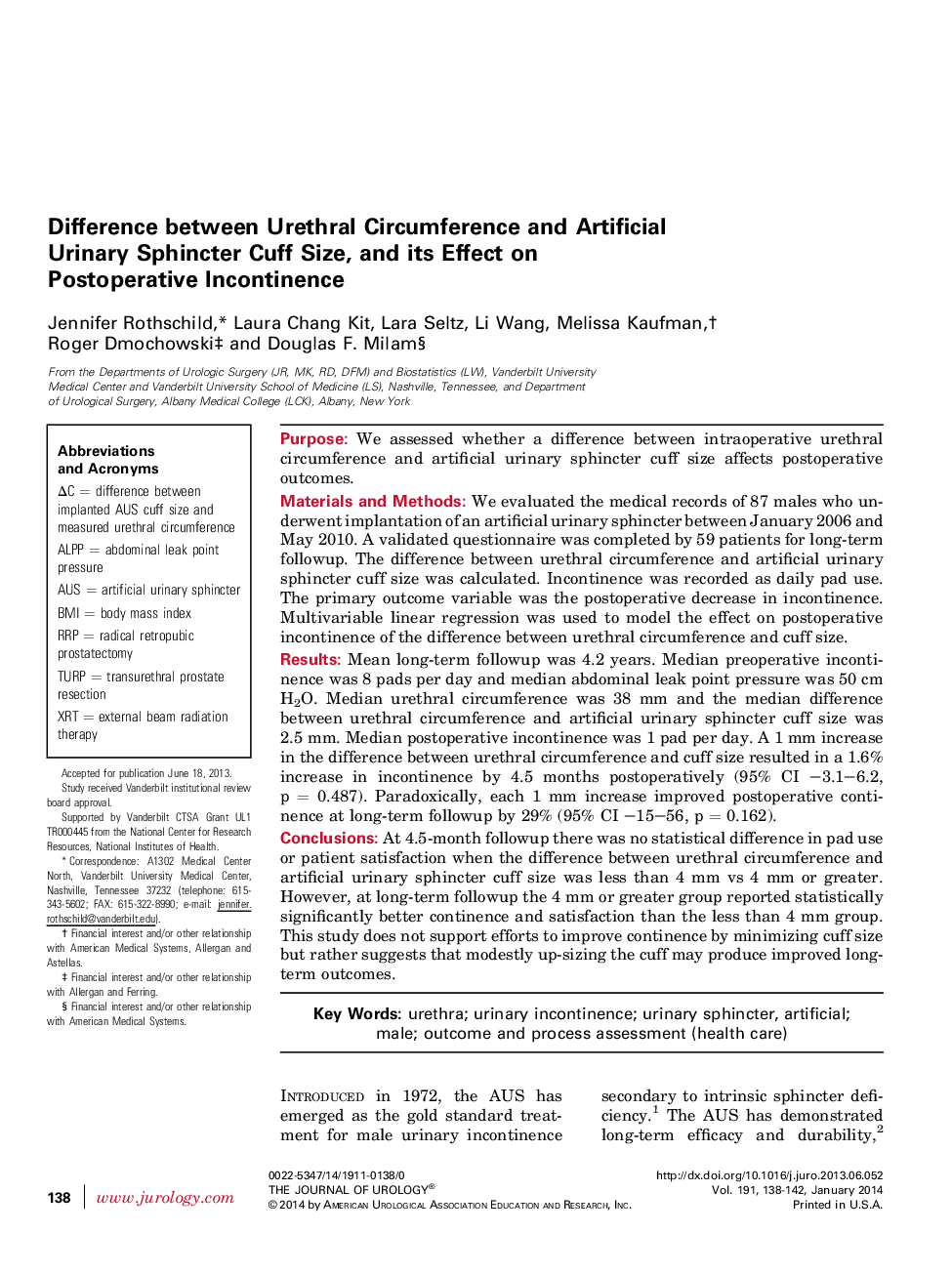| کد مقاله | کد نشریه | سال انتشار | مقاله انگلیسی | نسخه تمام متن |
|---|---|---|---|---|
| 3863558 | 1598910 | 2014 | 5 صفحه PDF | دانلود رایگان |
PurposeWe assessed whether a difference between intraoperative urethral circumference and artificial urinary sphincter cuff size affects postoperative outcomes.Materials and MethodsWe evaluated the medical records of 87 males who underwent implantation of an artificial urinary sphincter between January 2006 and May 2010. A validated questionnaire was completed by 59 patients for long-term followup. The difference between urethral circumference and artificial urinary sphincter cuff size was calculated. Incontinence was recorded as daily pad use. The primary outcome variable was the postoperative decrease in incontinence. Multivariable linear regression was used to model the effect on postoperative incontinence of the difference between urethral circumference and cuff size.ResultsMean long-term followup was 4.2 years. Median preoperative incontinence was 8 pads per day and median abdominal leak point pressure was 50 cm H2O. Median urethral circumference was 38 mm and the median difference between urethral circumference and artificial urinary sphincter cuff size was 2.5 mm. Median postoperative incontinence was 1 pad per day. A 1 mm increase in the difference between urethral circumference and cuff size resulted in a 1.6% increase in incontinence by 4.5 months postoperatively (95% CI –3.1–6.2, p = 0.487). Paradoxically, each 1 mm increase improved postoperative continence at long-term followup by 29% (95% CI –15–56, p = 0.162).ConclusionsAt 4.5-month followup there was no statistical difference in pad use or patient satisfaction when the difference between urethral circumference and artificial urinary sphincter cuff size was less than 4 mm vs 4 mm or greater. However, at long-term followup the 4 mm or greater group reported statistically significantly better continence and satisfaction than the less than 4 mm group. This study does not support efforts to improve continence by minimizing cuff size but rather suggests that modestly up-sizing the cuff may produce improved long-term outcomes.
Journal: The Journal of Urology - Volume 191, Issue 1, January 2014, Pages 138–142
